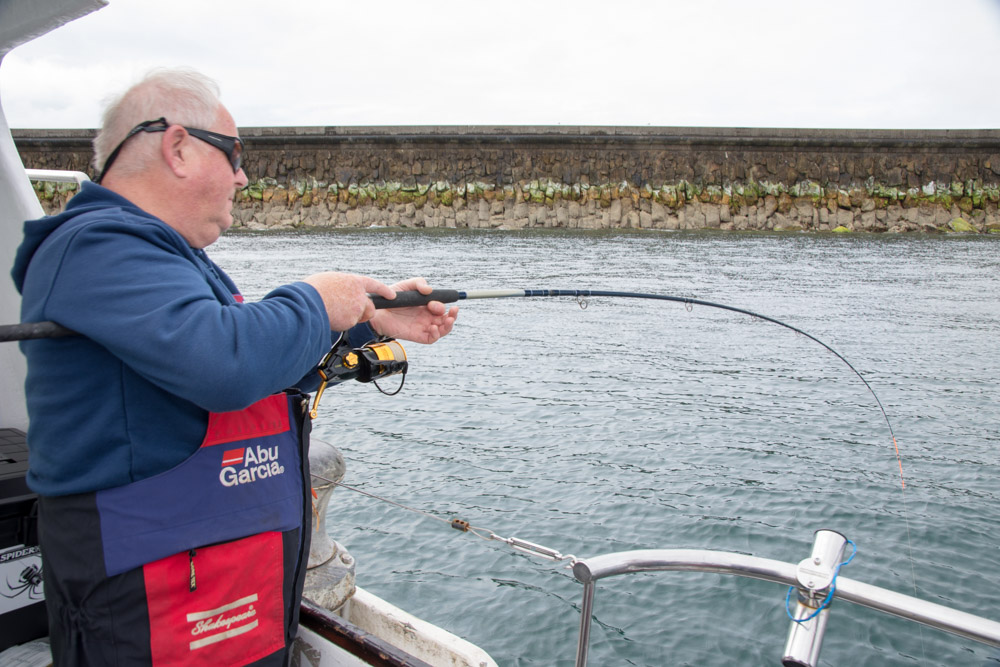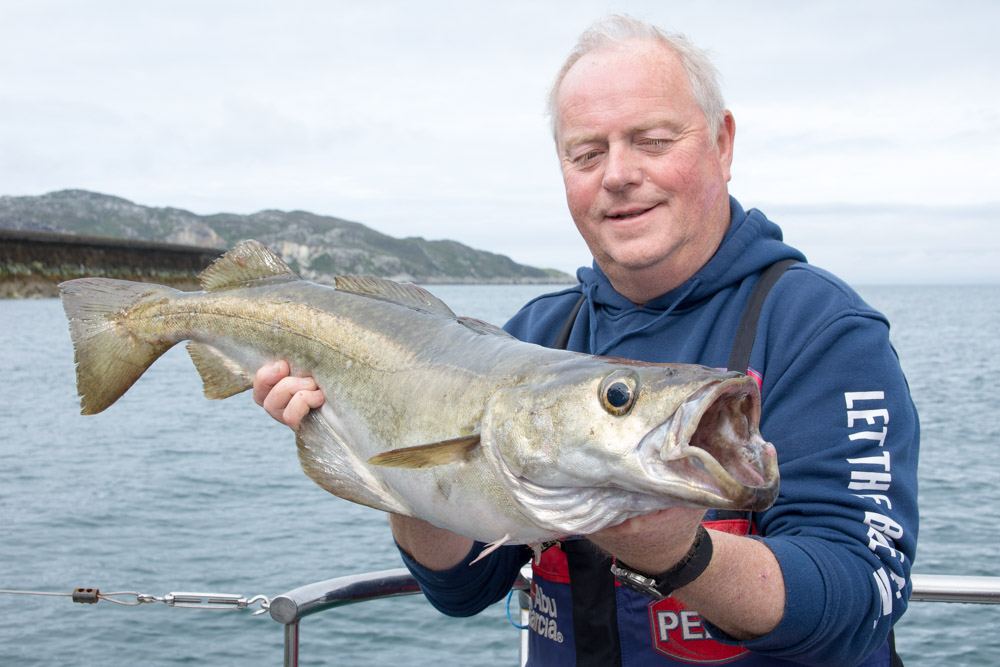I’m a firm believer in using the lightest tackle I can get away with for any given boat fishing situation. Some anglers wrongly assume this is simply to get more fun from smaller species. It does serve that purpose, of course, but there’s a much more important reason. I find I catch a lot more fish.
What we fail to realise is that changes in line diameter, and especially in hook length sizing’s, the material we choose for our main rig bodies, even hook size and weight will all make a major difference in how the baits behave. This matters greatly when targeting smaller species, but has the additional advantage of catching unexpected much bigger fish that may well have learnt through being lost, to avoid certain forms of presentation and certain sizes of hook baits. This applies to resident species such as wrasse, pollack and coalfish living on rough ground inshore where angling pressure is high, and even on wrecks and reefs which get fished regularly.
Light tackle needs to be balanced. As regular readers will be aware, I’m a big fan of the new generation soft tip boat rods in the longer 9ft to 11ft lengths. These give you way more reach to get your baits away from other anglers fishing alongside you, but also have an action that suits very light hook lengths, but with power in the mid section and butt to really play big fish out when you need to. The soft tip takes the pressure off the hook link when a big fish dives and takes line. It also helps define bite detection better when targeting smaller species.
Switching from say 30lb braid, which is the commonest line most anglers choose these days, to 20, or even 15lb braid makes a massive difference regards bite detection, too. Tidal pressure is reduced on thinner diameter lines improving bite detection by keeping the line tighter and less prone to drifting off at an angle due to water pressure, plus it allows you to use lighter lead weights that will trip along a rough seabed and get snagged way less than heavier leads will.
Now to the finer point of light tackle fishing. Rigs! It’s common sense to try to keep the visual impact of any boat rig to a minimum, especially when fishing inshore waters, but this can also apply over wrecks in deeper water, as we’ll see shortly. I favour a 2-hook adjustable rig for my inshore work and make the rig body from either 30lb or 40lb Fluorocarbon. I keep stressing this, but the Fluorocarbon is my first choice because its way more abrasion resistant than mono, stretches less so improves bite detection, but is also less easy for the fish to see in clearer water. I lock off my hook link swivels on the Fluorocarbon by adding neoprene tubing and passing the line over the top and back through the tubing a second time, then pulling the line tight to lock them off. These will slide under pressure, but so what, just slide them back if it does slide when you unhook the fish. The adjustability means I can move the hooks up and down on the rig to target specific ground fish, but also move them up to target free swimming fish at different higher levels in the water column. A size 4 rolling swivel at the top, and a lead link at the bottom completes the rig.
The really critical bit is the hook length. Again I opt for Fluorocarbon for its abrasion resistance and minimal visual impact, plus lack of stretch. It’s the hook and bait size that dictates the breaking strain of the hook length. For general ground fishing targeting haddock, gurnards, codling, whiting, small ling, and anything else that happens along, I go for a size 2 Kamasan B940 Aberdeen and a 20lb hook length about 15-inches long. On rougher ground, but in shallower water where decent sized wrasse are likely, I’ll stick to the same rig.
What dictates a change to lighter hook lengths, smaller hooks and baits, is when the fish are cagey and tapping the baits but not taking them in. Worst case scenario is getting no bites at all. This is when I drop the hook length down to 15lbs, and sometimes 12lbs and even 10lbs. What happens then is that the lighter hook lengths in conjunction with the smaller hooks make the bait behave much more naturally and they are more readily taken by the fish. It’s typically this exact scenario when an unexpected big fish turns up. There is always an element of luck in fishing, but it is fact that these light line tactics when adapted do have the habit of producing lunkers on a day when little else is happening. This was exactly the case with the 10lb 10oz pollack in the photo accompanying this blog. It was caught just 100-yards from shore in 28-feet of water aboard Gethyn Owen’s boat My Way off Holyhead on a 12lb Fluorocarbon hook length and a size 6 Aberdeen hook baited with a sliver of sandeel fillet. I know full well that fish would not have taken heavier tackle or bigger baits on the day. It was luck being over the fish, but equally the tackle was right for that exact situation.
I’ve mentioned wrecks, and keeping rig components to a minimum again proves effective. I haven’t used a Flying collar boom now for many years. I simply use a swivel link tying the main line and the hook length to the top swivel eye, and add the weight to the clip. Simple, effective, and with minimal tackle to snag or lose. This stays the same all day, but I will adjust the hook length to suit the tidal conditions and whether I’m getting bites or not.
I usually start with 20lb Fluorocarbon, but if no bites are forthcoming will drop to 15lbs and I’ll lengthen the hook length by a couple of feet. This usually does the trick. If not, then I’ll drop the hook length to 12lbs and use smaller lures. You need a softer 12/15lb rod action for this, and a reel drag set light enough to give line under normal pressure. You risk losing a crash diving pollack occasionally if it reaches the wreck, but then you need to get bites to catch fish in the first place, so it’s a balanced trade off. Again I’ve found I’ve often had my best fish of the day when I’ve reduced the hook lengths breaking strain, so its not a one off occurrence.
Next time you’re struggling for bites, make the effort and go lighter. It’ll make a big difference to your fishing.

